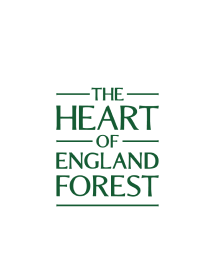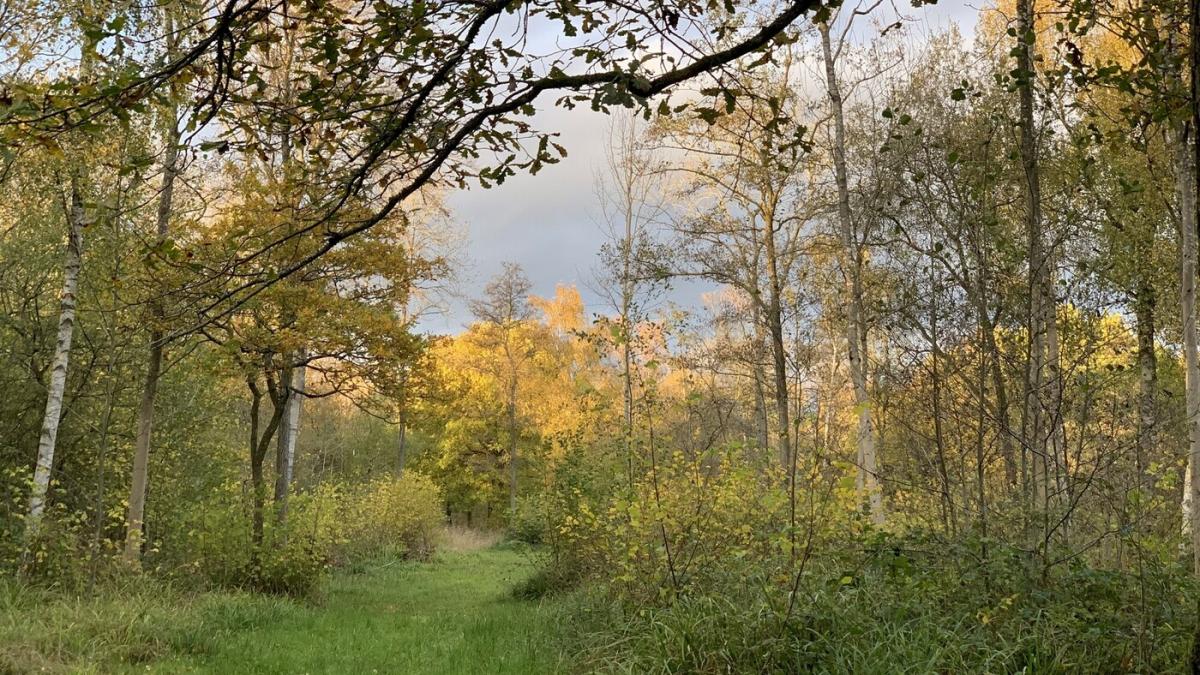
Behind the scenes: Conservation efforts at Roundhill Wood
Nurturing a variety of habitats is essential to enable the Heart of England Forest to benefit the environment, wildlife, and people, and to thrive in the long term. Roundhill Wood has been a key focus for our biodiversity team, with habitats ranging from woodland, grassy rides and wetland. It adds to the over 600 acres of mature and ancient semi-natural woodland that we already protect as part of the Forest’s rich mosaic.
Roundhill Wood isn’t accessible to the public due to delicate ground flora as well as conservation efforts focusing on Red List species, such as the brown hairstreak and wood white butterflies.
Why is woodland management important?
Woodlands are among the richest and most valuable natural environments, playing a vital role in supporting biodiversity, combating climate change, and enriching human life. However, without proper care and intervention, these ecosystems can become degraded, threatening both wildlife and the ecosystem services forests provide. Woodland management is therefore essential to maintaining healthy, resilient forests that continue to benefit both nature and people.
Managed woodlands are alive with diversity. Trees at different stages of growth, open glades, and deadwood habitats all support a wide range of species—from birds and bats to fungi and wildflowers. Without active management, the woodland canopy can become too dense, reducing light levels and limiting the variety of flora and fauna that can thrive. Management techniques such as coppicing, selective thinning, and the careful removal of invasive species help maintain a rich, balanced ecosystem offering structural diversity.
Woodlands also act as powerful carbon sinks, absorbing carbon dioxide from the atmosphere and helping to mitigate the effects of climate change. By encouraging a healthy mix of tree ages and species, woodlands can grow with longevity and sequester more carbon. Sustainably managed woodlands can provide timber and other resources, reducing reliance on imported goods with higher environmental costs. Additionally, woodland plays a crucial role in stabilising soils and regulating water cycles. Well-managed woodlands help reduce the risk of soil erosion, improve water quality, and can provide natural flood management, limiting the severity of floods.
Effective woodland management relies heavily on understanding the needs of the wildlife that depend on the habitat. Regular monitoring through surveys of species such as birds, mammals, insects, and plants help us understand population trends. Monitoring informs adaptive management strategies and provides evidence of success in conserving and restoring woodland biodiversity.
Woodland management is about balance. Through monitoring wildlife to advising management, informed intervention and applying traditional and modern management techniques, we can ensure that woodlands continue to be places of rich biodiversity, while providing vital ecological services for generations to come.

A place for wildlife
Ancient semi-natural woodland (those continuously wooded since at least 1600 AD) are irreplaceable. They are home to complex ecosystems, rare species, and historical features that have developed over centuries. Once lost, these woodlands simply cannot be recreated. Woodland management is crucial for protecting these special sites and sustaining their unique ecological character.
Roundhill Wood is a large parcel of Ancient Semi-Natural Woodland (ASNW) approximately 37 hectares (92 acres) in size. The site supports a variety of trees and shrubs, including pedunculate oak, silver birch, downy birch, ash, willow and field maple. Over 300 different species of plants have been recorded, including seven different orchids such as common-spotted and greater butterfly-orchid. Parts of the wood were felled and replanted with a variety of native and non-native broadleaf species, including grey alder and sycamore for use as brush handles (most recently for the Harris brushworks company) over half a century ago.
A network of rides (a legacy of being a Harris brushworks wood) runs through the site, some of which are particularly botanically interesting, but also excellent for butterflies. Species recorded within the wood include white letter hairstreak, white admiral, silver washed fritillary, brown hairstreak, and as of 2022, a single purple emperor was seen on the edge of the wood.
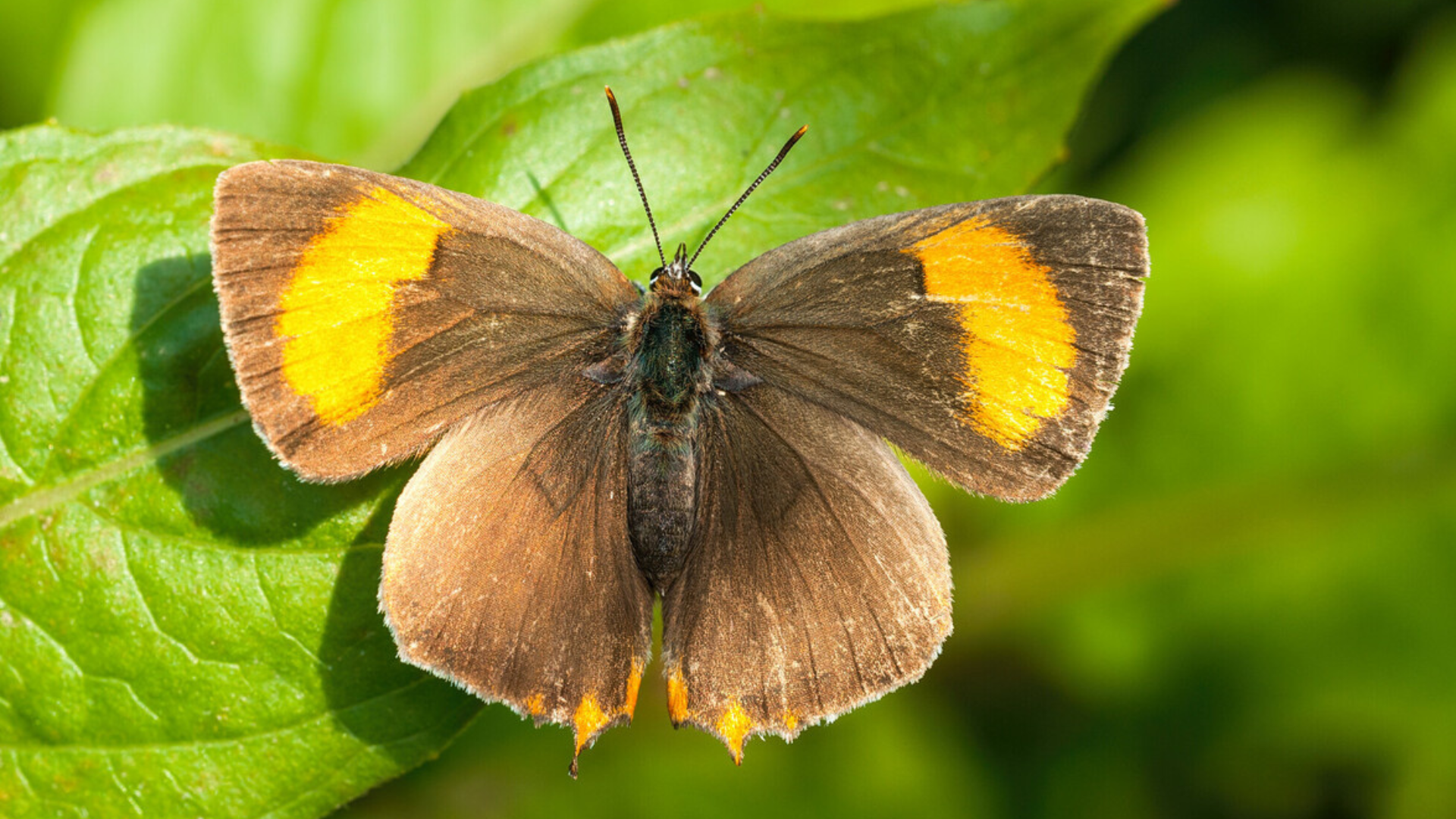
A series of 11 ponds within the woodland support a great number of species, notably great crested newt, willow emerald damselfly and an impressive assemblage of diving beetles. These ponds spend the year undisturbed by humans and their four-legged friends resulting in high biodiversity and even the formation of rare habitat – a floating vegetation mat.
What’s been happening in Roundhill Wood from winter 2024 to winter 2025
Roundhill Wood has been a hive of activity over the past year as we have reinstated active woodland management.
So, what have we been up to?
Coppicing
Coppicing is an ancient woodland management practice where trees, often hazel, are rotationally cut to ground level, stimulating regrowth from the stump. This technique promotes biodiversity, creates structural diversity, extends tree lifespan and ensures a sustainable yield of timber used in traditional practices such as hedgelaying. At Roundhill Wood we have three active 9-year coppice rotations, with all work being undertaken by local contractors, who each cut in an area of 0.5 hectares per year.
Horse logging

Horse logging is a traditional practice using horses to extract timber from woodland in a low-impact, environmentally sensitive way. It minimises soil disturbance, protects young trees, and is often used in conservation-based woodland management. Again, working alongside a local contractor, at Roundhill Wood, we have utilised horse logging when bringing out large quantities of hazel poles, causing minimal disturbance to the soil and ground flora.
Pond management
Pond management involves maintaining and enhancing ponds. This can be by controlling vegetation (aquatic, marginal, encroaching woody species), monitoring water quality, enhancing aquatic and marginal plant species, monitoring aquatic invertebrate assemblages, and even reprofiling or de-silting using machinery. Proper management ensures ponds remain vital habitats for wildlife and contribute to the biodiversity of the wider landscape.
At Roundhill Wood, there are 11 woodland ponds, and alongside our wonderful volunteers, we have managed a number of these over the winter months, cutting back portions of encroaching woody species such as willow, hazel, and bramble, allowing more sunlight to reach the water and south-facing banks. Over the summer months, we have undertaken odonata and aquatic invertebrate surveys, monitored water quality through testing water samples, and also continued to record the presence of great crested newt.
Invasive non-native species (INNS) removal
Invasive plant species removal involves identifying and removing non-native plants that threaten the biodiversity of our ecosystems. Effective removal helps native species recover, restores natural habitat, and prevents long-term ecological damage. At Roundhill Wood unfortunately, we have recorded a number of invasive non-natives including variegated yellow archangel, Italian lords-and-ladies and early-flowering borage. Through hard work and dedication our volunteers have helped to dig up, remove, and destroy a large amount of these species, however our work here will continue for some years to come.
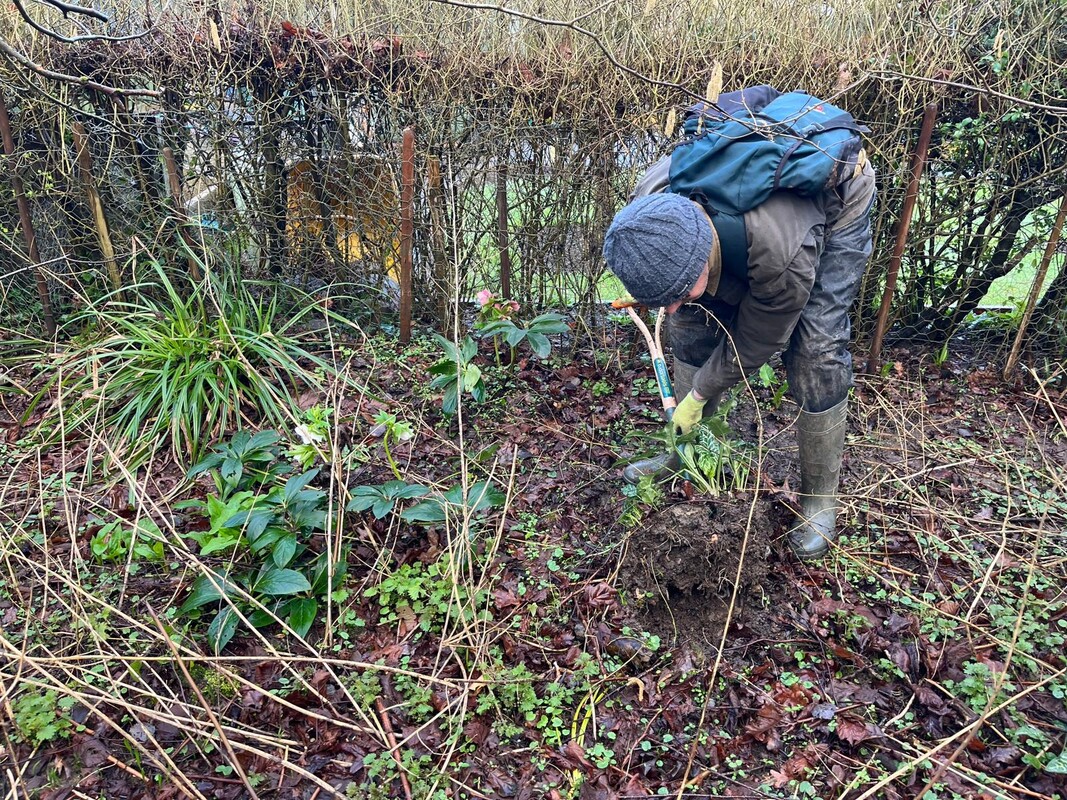
Woodland ride management
Ride management enhances biodiversity by maintaining open, sunlit corridors through the woodland, supporting a wide range of flora and fauna. These linear habitats act as ecological highways, benefiting pollinators, birds, butterflies, and important plants (including devil’s-bit scabious and betony), thus enhancing the overall woodland biodiversity. During September with invaluable support from our volunteers, we mowed and raked the entire woodland ride system, as a result this year, we are seeing higher numbers of spring flowers such as primrose, common dog-violet and goldilocks buttercup. Additionally, during the winter, again with volunteer support, we widened a 50-metre stretch of one of the main rides by coppicing a strip of hazel and cutting back bramble to create more structural diversity.
Wildlife monitoring
Wildlife surveying and monitoring involve the systematic recording of species and habitat to track changes in biodiversity over time. These surveys provide essential data to guide conservation efforts, evaluate habitat condition, and inform evidence-based woodland management. At Roundhill Wood we undertake a myriad of surveys, including odonata, butterflies, aquatic invertebrates, woodlouse, and botanical surveys. Additionally, we undertake species-specific surveys like white admiral larval searches and brown hairstreak egg searches.
Small Woods Association
The team have been focussing on planning and undertaking woodland management tasks, as part of our partnership with the Small Woods Association.
The Mercian Woodland Biodiversity Project is a collaboration between Severn Trent Water (STW) and Small Woods Association (SWA), the purpose of which is to increase woodland biodiversity through the enhancement of habitats, bringing woodlands back into active management, and restoring coppice within the Severn Trent area. Through our partnership with SWA we have created a woodland management plan for Roundhill Wood and reinstated active management within this exemplar woodland.
Without the support of this project, we would not have been able to complete the deer fence, which encloses the site, enabling us to protect the delicate woodland flora, hazel coppice, and natural regeneration from overgrazing by deer. We were also able to purchase a new brush cutter with a mulching head and a new chainsaw, supporting productive woodland management within Roundhill as well as some of our other mature woodlands.
We would like to thank SWA for their support and resource sharing, we couldn’t have done it without you!
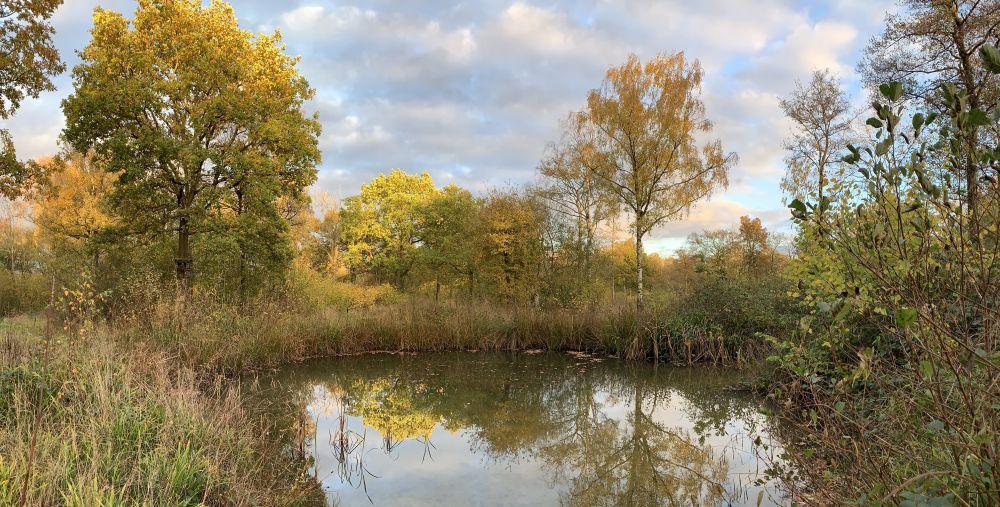
Creating a legacy of nature
By becoming a Friend of the Forest, you’re directly supporting the conservation of rare habitats and species, like those in Roundhill Wood, through a regular donation.
From as little as £5 a month, you contribute to a healthier, more vibrant Forest for generations to come—one that benefits wildlife, the environment, and your local community.

